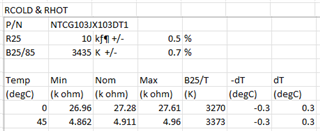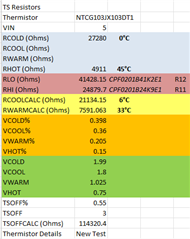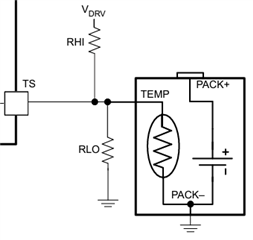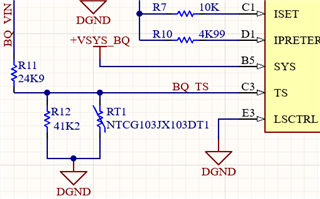Hello,
We are using the BQ25120A and would like to enable the NTC functionality to limit charging to our battery.
We would like to set the charging temperature range to be 0 to 45°C.
This means RCOLD should be 0°C and RHOT be 45°C.
We are using an NTC with part number NTCG103JX103DT1:
https://product.tdk.com/en/search/sensor/ntc/chip-ntc-thermistor/info?part_no=NTCG103JX103DT1
At 0 and 45°C, we get the following NTC values according to the RT Sheet of the part number:

Based on these NTC values and using the TS calculator provided in another thread, we received the following values:

And using the RHI and RLO values calculated, we used the following configuration:


https://www.digikey.com/en/products/detail/te-connectivity-passive-product/CPF0201B41K2E1/14007003
https://www.digikey.com/en/products/detail/te-connectivity-passive-product/CPF0201B24K9E1/14006959
Upon testing, however, our charging current of 24mA is not decreased even all the way up to 60°C.
1) How should we properly configure this resistor network for proper functionality?
2) Are the values I used in the calculator tool incorrect?
3) Is there a firmware setting that needs to be enabled for proper NTC functionality?
4) Is it an issue with the NTC selection? Does the beta constant need to be increased? I did see this thread:
Thank you!

